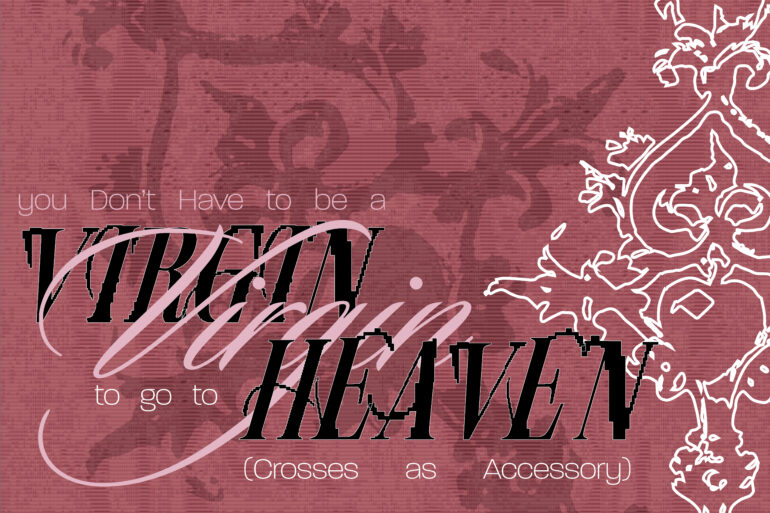While it is safe to say that the entire world has not turned to Christianity, recently there have been countless crosses on necks. In origin, the cross is one of the most iconic forms of symbolism. In earlier days it was worn, hidden on most, in order to remind those of the Christian and Catholic faith of Christ’s crucifixion, hence the cross, but when did it gain popularity in fashion?
As music and fashion have always come hand in hand, it is not surprising that one of the first people to wear a cross in a non-religious way, gaining traction was Madonna. From the beginning of her career the artist has branded herself as the Catholic girl gone rebel. One of the biggest moments for her music and in “cross history” was the debut of “Like a Virgin” at the 1984 VMA’s. Dressed by stylist Maripol, Madonna wore a wedding gown with a lace bodice, tulle skirt and a rosary cross. Not only did she shock the world with her scandalous performance and outfit, but it was one of the first times the cross was worn on such a public figure in an opposing viewpoint to its original “purpose”. This was a breakthrough moment for women to take back a symbol that was used as a means of oppression. Essentially, you don’t have to be a virgin to go to heaven.
In 2013 the Dolce and Gabbana Milan Fashion Week show was one of the first fashion houses to accessorize with crosses in such a large and evident way. The collection was heavily inspired by the Sicily Cathedral of Monreale, the house originating in Italy and designers of Catholic descent. This collection was such an incredible homage to the religion while still keeping true to the brand’s identity. Hand beaded ornate evening wear and rosaries hit the runway, and from that day onward the romanticization of Catholicism was present in high fashion. Other brands later incorporated it through various aesthetics from Vivienne Westwood’s punk to Jean Paul Gaultier’s camp.
The next defining moment, possibly the most industry changing for the cross, happened in the spring of 2018 with the “Heavenly Bodies: Fashion and the Catholic Imagination” Met Gala. The Catholic Imagination is a topic that starts conversation and tells stories, so it was groundbreaking to mix such a sacred concept with modern promiscuous fashion. Was this Anna Wintour and the biggest names in fashion condoning Catholicism cosplay? Some of the most iconic looks from the night included Bella Hadid dressed in Chrome Hearts Official whose logo is a cross, JLO in Balmain with a high cross bodice, and Kim Kardashian in a gold Versace dress with cross detailing. Of course, in Jean Paul Gaultier, The Madonna flaunted a gown with a mesh cross opening on her chest.
Whilst still seeing action on the runways, the music industry has played a monumental role the revival of the trend. Specifically artists like Lana Del Rey and Ethel Cain have begun bringing the symbol back into their aesthetic, creating less of an origin meaning to the jewelry. Ethel Cain specifically, a trans woman artist on the rise to fame, was inspired, similarly to Madonna, by her Christian upbringing and the concept of not being accepted for who you are. She has taken the symbol back for much of the queer community and altered the narrative on the personal relationship with Christianity.
Overall, as someone who grew up celebrating Christian holidays, I can understand the controversy of the crosses being a “cool” trend. After all, it’s hard to imagine other religious symbolism becoming mainstream in fashion. I do feel however that the cross is an integral part of the fashion industry today. The romanticization as well as its use in gothic style creates more and more statement fashion that I personally enjoy seeing. I think Christianity and Catholicism is an integral part of art history, and fashion is just another way the artistic symbol has been able to live on.
Words by Elisabeth Edwards.
Graphic by Kai Leon.

